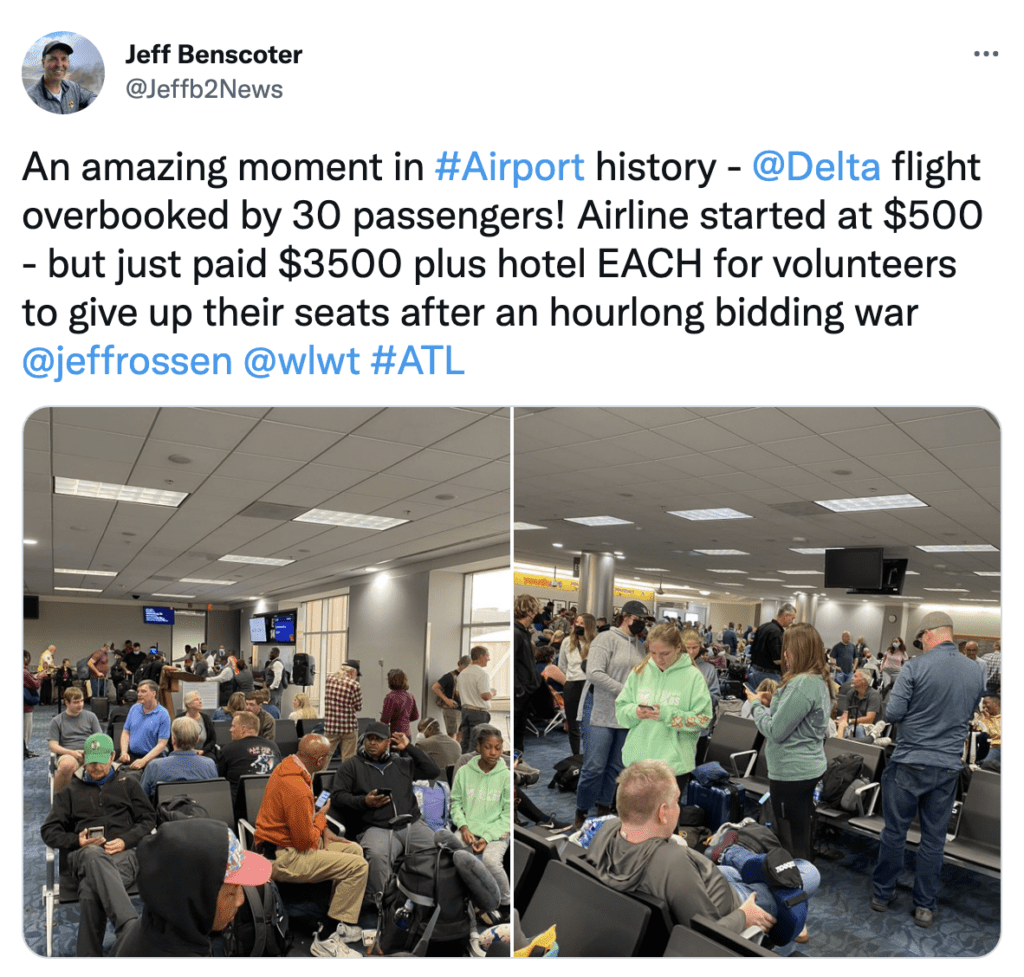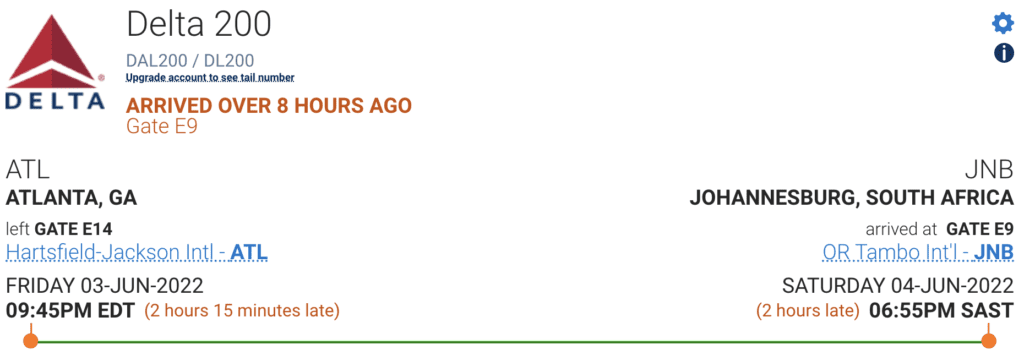At the moment, airplanes are really full, and a combination of fewer flights and more people wanting to travel results in high fares and hardly an empty seat to be found.
While airlines might not be trying to oversell flights, the frequent cancellations and delays mean we’re back to hearing a pre-flight announcement asking if any passenger is willing to take a later flight for compensation (and possibly a hotel room if the next flight isn’t until the following day).
This situation is nothing new. Airlines are well within the contract of carriage to deny boarding to passengers, and they could pay you the governmentally required amount of 4X your ticket price (with a max of $1,550.)
However, it’s terrible PR to deny boarding involuntarily, and airlines would rather have a passenger agree to take a later flight. In 2017, Delta Airlines upped the maximum compensation for “bump vouchers” to $9,950. Airlines know that they’ll usually find takers once the price goes high enough. Like when Delta paid 30 passengers traveling to Iceland $4,500 each to take a flight the following day.
When airlines need a group of passengers to take a later flight, there’s a reverse auction. Passengers will volunteer when they feel the price is high enough. However, all passengers will typically receive the same payment as the final passenger to agree to an offer. In this case, the final price was $4,500.
It’s not known how many times this happens. The above case got coverage because one of the passengers to get a voucher was a fellow Boarding Area writer.
Apparently, it’s not uncommon, as Delta again had to lay out another large chunk of cash to get enough passengers to take a later flight.

I guess Jeff, who is an award-winning news director for Cincinnati’s NBC affiliate WLWT, didn’t know about the flight to Iceland last year. While not as amazing, it’s still a hefty amount and paying $3,500 to 30 passengers ended up costing Delta $105,000 plus the price of hotel rooms. Detail-oriented readers noticed from the Delta gate monitor and the gate number that this was Delta flight 200 going from Atlanta to Johannesburg, S.A., which explains the reluctance of many passengers to take a later flight.
It took time to find enough passengers to volunteer as the flight left over 2 hours late.

Since the plane type was the same one typically used for the route, I’m wondering if Delta needed to reduce weight for additional fuel, which was why they needed to bump 30 people from the flight to Iceland.
With ultra-long-haul routes, any change in weather patterns or routing can change the delicate balance between fuel and weight. I’d hate to be the person doing the math who has to call the gate and tell them that they’ll need to fly with 30 fewer passengers than planned.
Want to comment on this post? Great! Read this first to help ensure it gets approved.
Want to sponsor a post, write something for Your Mileage May Vary or put ads on our site? Click here for more info.
Like this post? Please share it! We have plenty more just like it and would love it if you decided to hang around and sign up to get emailed notifications of when we post.
Whether you’ve read our articles before or this is the first time you’re stopping by, we’re really glad you’re here and hope you come back to visit again!
This post first appeared on Your Mileage May Vary

2 comments
😎 on the weight issue. Otherwise really bad Rev management.
I guess this is cheaper for DAL to offer bribes/payouts on this route than having to:
1) cancel the flight and appear on the D.O.T. monthly bad boy list
2) keeping the 777’s that previously flew this route which have the range and psyload to fly nonstop ATL-JNB
3) not having to pay involuntary denied boarding compensation – which also appears on the D.O.T. bad boy list
Management can now share with the board how much DAL is “saving” by getting rid of those awful 777’s for long haul routes. It’s cheaper to make payouts and inconviencing passengers rather than having a small fleet of reliable 777’s for long haul routes…lol
SO_CAL_RETAIL_SLUT